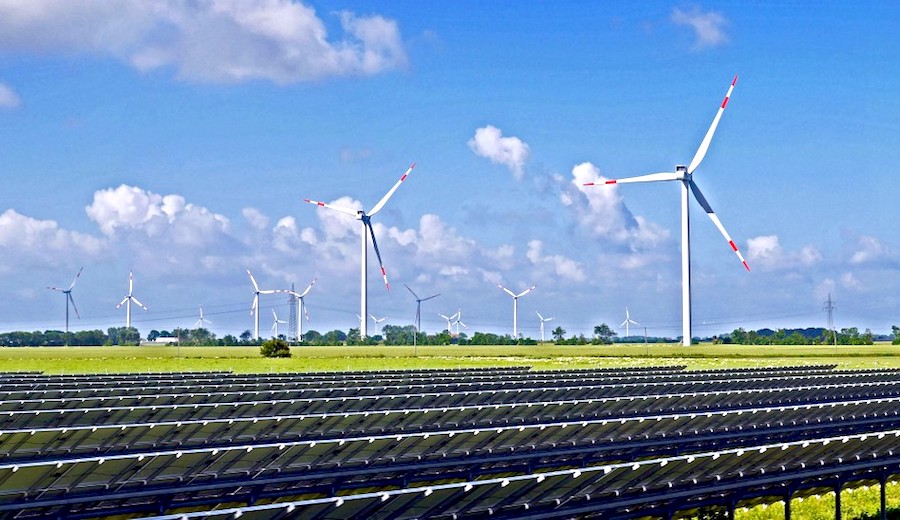
Delivered at the FT Global Commodities Summit, Tokyo, 1 November 2019
The perception of sustainability as a nice-to-have but costly luxury has changed irrevocably in the past 18 months. With energy transition and emissions reduction well underway and changing every aspect of a companies’ assets and operations, sustainability is now an imperative. This is due to a few key drivers that have made today’s sustainability all about finance, risk, and opportunity—and one of the highest priorities at the board and executive level of all major organizations.
The first driver is that the cost of alternative technologies is plummeting. Solar photovoltaics have decreased in price by 80% since 2008[i] with lithium-based battery storage dropping 70% over the same timeframe.[ii] Both are continuing to drop in price by approximately 20% yearly.[iii] This means it is now much cheaper to substitute renewables for fossil fuel and, in many cases, attain significant economic benefits. In short, renewable energy has now reached price parity. And performance parityis not far behind. According to Deloitte’s Global renewable energy trends report, smart grid design, interconnection, storage, and demand response solutions when combined can all make performance parity possible.
Chief among corporate action is the push to decarbonize supply chains. There is a nascent demand for green, carbon-neutral copper and green nickel for batteries and electric vehicles
Other technologies that may have long-term potential but are not yet seeing the same level of cost declines include carbon capture and storage and fourth generation nuclear. However, other battery chemistries such as vanadium flow batteries and energy storage solutions such as pumped hydro and compressed air are seeing some progress. Hydrogen is also getting a lot of attention, with very large oil and mining companies actively reviewing and developing projects. Similarly, there are significant niches emerging for ammonia, steel, pipeline gas, and heavy land and marine transport, though the economics remain challenging. (Deloitte will be publishing global demand projection for this market in November, underpinning the Australian Government’s National Hydrogen Strategy).
Recent projections from the Intergovernmental Panel on Climate Change (IPCC) indicate that all of these technologies are going to need work to be able to achieve global emissions targets. But even though the technology future is not clear, one thing is: rapid change is already happening.
The second driver involves policy and corporate action. The 2015 Paris Agreement has set the bar of expectation, seeking to limit temperature rise this century to 1.5C. At the current rate of emissions, that limit will be exceeded in 2028. As such, it is highly likely that governments will increasingly take stronger regulatory action on climate change, despite the give and take of politics. More predictable and stable, however, are the actions of multinationals, which have already signed up to initiatives such as the RE100 and the B Team. These corporate initiatives can drive confidence across economies that emissions reduction is here to stay.
Chief among corporate action is the push to decarbonize supply chains. There is a nascent demand for green, carbon-neutral copper and green nickel for batteries and electric vehicles. Green steel demand is being discussed and some suppliers are starting to offer green LNG utilizing carbon offsets. Carbon-neutral transportation solutions will also be needed to deliver these carbon-neutral products. This quest for decarbonized supply chains will have a domino effect throughout the entire economy yielding a range of opportunities.
Companies are also starting to see value beyond compliance (see Deloitte report). That means behaviors and actions are moving beyond shareholder value to encompass a wider set of stakeholders. Commodity-focused companies now need to think about the value they provide to their host regions and the impact they have on communities, including royalties, infrastructure, jobs, poverty alleviation, and environmental footprint.
The third, and possibly strongest, driver is the investor pressure now being exerted on multinational companies. Through the Taskforce on Climate-related Financial Disclosure (TCFD) reporting framework, large companies are being forced to disclose their climate risks with respect to commodity risk, carbon-pricing risk, stranded asset risk, and the risks from increasing severe weather events. Under a range of future scenarios, the impacts on companies’ earnings over the next 10 to 20 years can flag material potential write-downs. It can also highlight strategic opportunities to reduce risks and increase opportunities for growth and investment. While this pressure is currently being felt only by global companies, it will be hitting national-level companies within the next 12 to 24 months.
To mitigate risk, companies need to understand their emissions profiles and link these with Science Based Target scenarios developed by the IPCC. They also need to set emissions reduction targets that are consistent with their public statements and strategic positioning. This can be done through abatement projects as well as by optimizing investment portfolios and analyzing policy options that deliver the desired outcomes most efficiently for governments and investors.
Given the aforementioned drivers, it is clear that sustainability needs to focus on making solutions practical, profitable, and permanent. In doing this, companies, governments, and investors can reduce costs and risks, identify and secure opportunities that deliver benefits to all stakeholders, and build financial resilience into the financial and economic framework in which they operate. In addition to increasing their chances of thriving throughout this inevitable transition, those who are proactive may ultimately find themselves with a strategic and competitive advantage. And those that fail to act in this fast-changing environment might very well find themselves left behind.
[i] Lazard’s Levelized Cost of Energy Analysis-Version 13.0, Lazard, November 2019.
[ii] “A Behind the Scenes Take on Lithium-ion Battery Prices,” Bloomberg, 5 March 2019.
[iii] Lazard’s Levelized Cost of Energy Analysis-Version 13.0, Lazard, November 2019; “A Behind the Scenes Take on Lithium-ion Battery Prices,” Bloomberg, 5 March 2019.
Comments